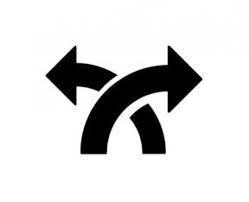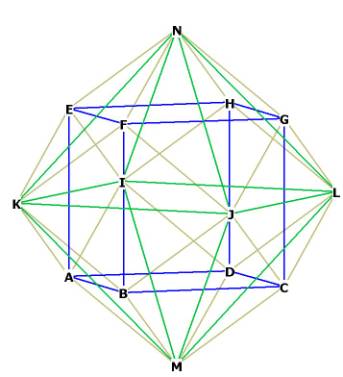|
(2019
midterm assignment) Model Midterm answers 2019 (Index) Essay 3: Web Highlights |
 |
Jacob O. Logan
March 27, 2019
Religion Is All Around Us
I was not sure what to expect to learn in this class, as
I thought it would be about science fiction literature. However, we are
exploring concepts of the past and how it relates to the present. In this class
we are reading various pieces of literature which present the narratives of
creation/apocalypse, evolution, and alternative classifications. We have
explored the book of Revelations from The Bible, Octavia Butler’s Parable of the
Sower, and H.G. Wells’ Time Machine. Books of religion, evolution, and science
fiction. It was interesting to read the model assignments and learn how religion
is present in all genres of literature, not just in religious works. Religion
crosses the line into our everyday lives and works of literature, often without
conscious observation.
In his 2016 essay Kyle Abshire reviewed the three types
of narratives. He made a valid statement when he observed that “the Bible is a
terrific example of an apocalypse narrative.” God creates the world in the book
of Genesis and then destroys it. In Revelations the earth is destroyed. Kyle
observes that “the evolution narrative often takes the same approach as the
apocalypse narrative, but usually concludes with a lesson learned and an
evolution in ideas or thought to survive the next possible destruction.” The
creation narrative relates how God created the world and Adam and Eve in the
Garden of Eden. When they sinned against God, they were made to leave Paradise,
and mankind then began to decline. Mankind’s defiance of God’s rules eventually
leads to the apocalypse described in Revelation, which foretells that the world
will be destroyed, and the sinners will be destroyed with it, leaving no hope
for the sinners. However, those who follow
God’s commands will be promoted to an ideal world to
live in eternal glory, providing hope for those who believe and follow the
commands of God. The Bible is obviously a religious work, but it also sets forth
rules by which many people live their lives, and, as Kyle Abshire observed, it
lays out the future mankind can expect if they disobey God’s commands.
Clark Omo in his 2017 Essay observed that, “Religion,
though many there are, has an importance to humanity. It asks us to quantify our
beliefs and seek a better state through those beliefs.” This is an interesting
thought, but even more interesting was how he proved this conclusion by showing
examples of religion used in the science fiction works of the Star Wars series.
He observed that Luke Skywalker’s “dedication mirrors the Christian maxims of
perseverance and faith: both the Force user and the Christian follower strive to
achieve perfection in their beliefs.” The Force in Star Wars is part of a
religious belief. The struggle between Luke Skywalker and Darth Vader is
comparable to the struggle between good and evil, the struggle between
Christians and Satan. Clark Omo’s essay was very enlightening and helped me to
see that religion is present in many forms of literature, not just religious
writings. Further, it helps me to observe the presence of religious beliefs in
everyday things which I had not noticed prior to reading his essay. Omo wrote,
“Religion in the form of the Force stands as a major power and shaper of the
world of Star Wars.” Science fiction deals with the future, and Star Wars is a
major science fiction work of literature. Omo concludes, “And with religion’s
relevance established in the world of Star Wars, thus its relevance can be
established throughout the science fiction genre as a whole.” Omo was able to
demonstrate that millions of people have related to the religious belief of good
versus evil without even realizing it, just by their contact with Star Wars. I
realized that religious beliefs are conveyed to the public without their
realization.
I next reviewed Clark Omo’s 2016 Essay 3, wherein he
makes observations of his studies of model assignments regarding the different
narratives. Omo reviewed Timothy Morrow’s essay and recognized that Morrow had
identified a pattern of creation of an Eden which worsened to the point that it
was totally destroyed. This was recognized in The Bible as well as Octavia
Butler’s The Parable of the Sower and H.G. Wells’ The Time Traveler. In each
case, the earth is a paradise that gradually worsens with mankind’s intervention
until it reaches a point that it cannot be redeemed, at which time it is
destroyed and a new world is created.
I found Omo’s observations to be very similar to my own,
and it was reassuring to know that another student has reached the same
conclusions as my own. Studying the three essays has allowed me to see that
stories are not just a means of entertainment; they also provide a glimpse into
what the future might hold by observing the past. Personal faith allows people
to believe in creation/apocalypse. The hope that mankind is always evolving
allows for people to look forward to the future and for the world to continue to
evolve. The apocalyptic narrative provides a way for mankind to realize there
are consequences for every action. How each person justifies his or her actions
depends on whether he or she believes in creation or evolution. Reading
different narratives of literature in this class has allowed me the opportunity
to reflect on my personal beliefs and how I can convey those to other people and
also realize the impact I have on the world around me. Reading the three
different essays has allowed me to reflect on the realizations other students
have reached and to view these works of literature from their points of view.
 |
 |
 |
